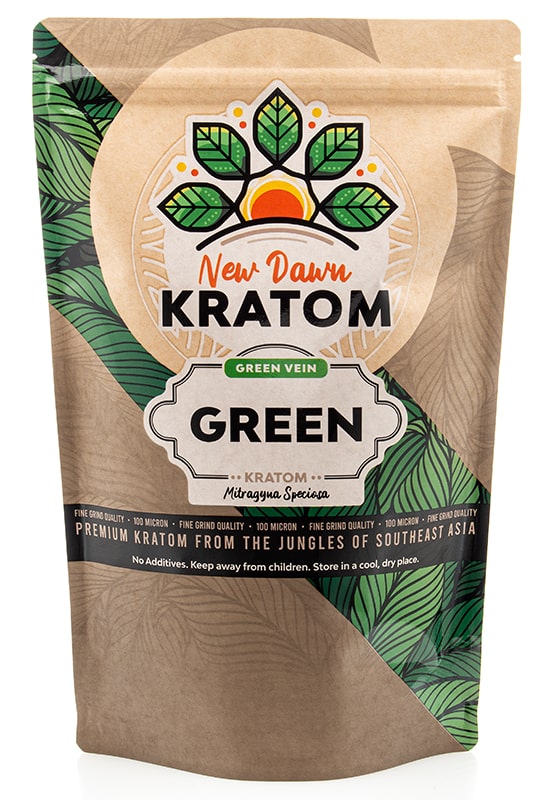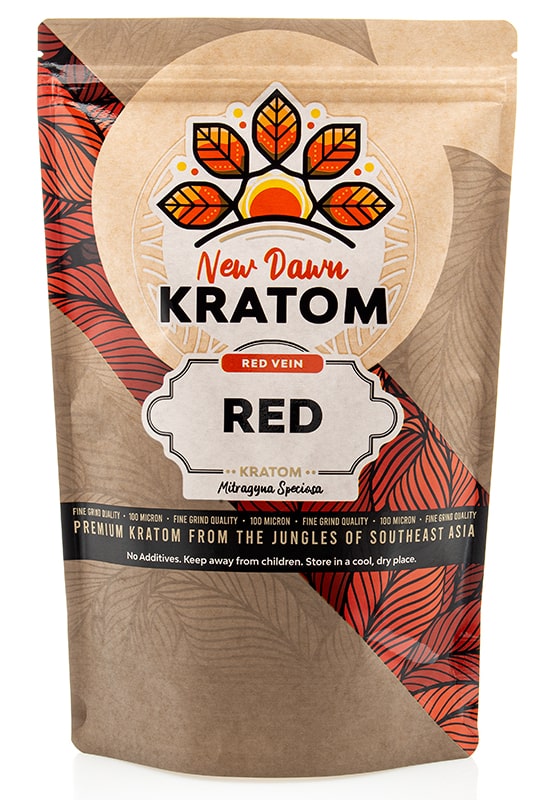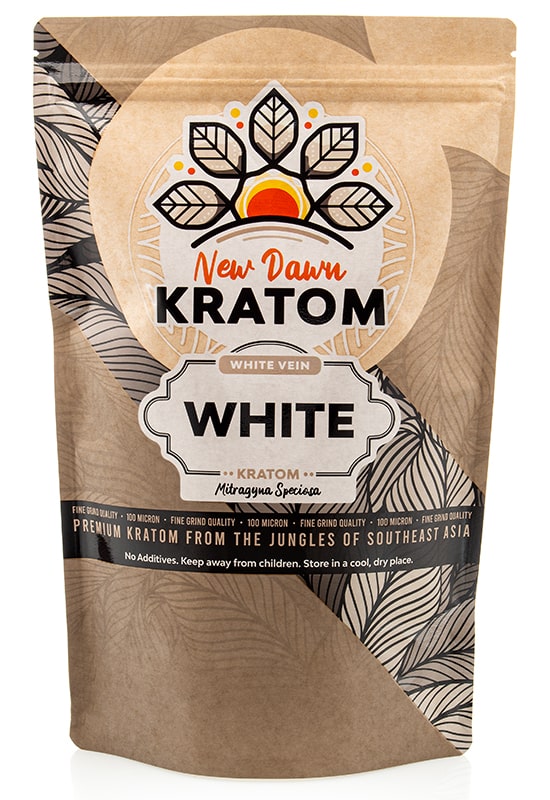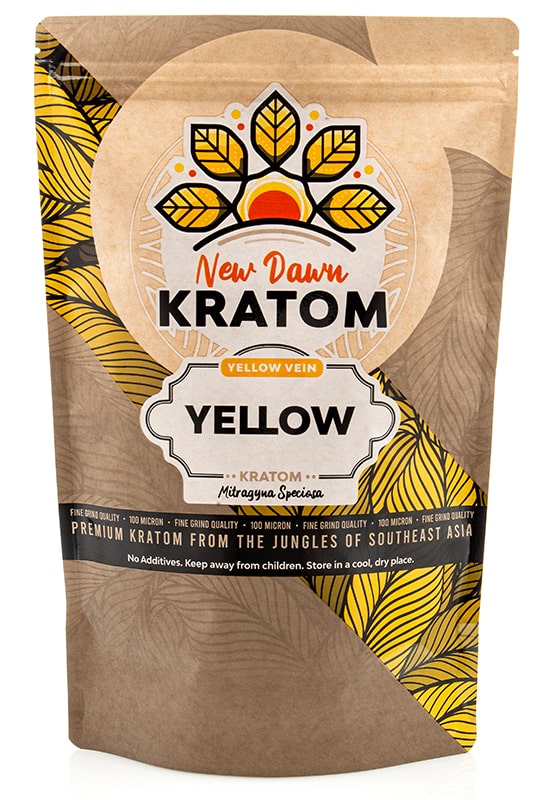Red Dragon and Red Elephant stand out as two unique strains in the kratom world, each with their own distinctive qualities and perks. Whether you’re new to kratom or an experienced fan, learning about these varieties will help inform your choices.
In this guide, we’ll break down these two red strains’ potential advantages, risks, ideal doses, and similarities. Our goal is to equip both kratom beginners and veterans to make the best decisions by fully understanding what makes these strains special and unique.
What is Red Dragon Kratom?
Red Dragon is not actually a strain but rather a blend of two other strains – Red Maeng Da and Red Elephant. It is unique because it combines the potential qualities of both popular red varieties. Over the last few years, it has become extensively popular and widely available.
Red Maeng Da and Elephant leaves are harvested later and sun-dried longer than their Green and White cousins, which is believed to lead to differing alkaloid development and concentrations than the other colors. Compared to Green and White, Reds are thought to be more calming, relaxing and sedating.
One thing that distinguishes Red Dragon is its array of major and minor alkaloids that spur different effects by binding with the body’s receptors. Usually, key components are mitragynine and 7-hydroxymitragynine, however, over 40 secondary alkaloids may also be present in differing quantities.
What is Red Elephant Kratom?
Red Elephant Kratom grows in the lush tropical pockets of Southeast Asia like Indonesia, Malaysia, and Thailand. It gets its unique name from the jagged, uneven shape of its leaves, resembling an elephant’s ears – hence the distinction. Red Elephant is part of the Red Dragon blend, so it naturally shares some similar potential qualities.
Red Elephant falls into the “red vein” family, meaning the veins and stems have a red hue, signaling a longer maturity of Elephant kratom leaves. Alkaloid-wise, Red Elephant contains a mixture of mitragynine, 7-hydroxymitragynine, paynantheine, and 30+ other alkaloids. Together, these compounds likely contribute to its calming and chilling effects.
Users frequently praise Red Elephant Kratom for its potential mellow, tranquil vibes. In contrast to Red Dragon, it is slightly less energetic (likely due to the Red MD in the blend).
How Do The Benefits Compare and Contrast?
Red Dragon
- Potential relaxation
- Potential mood enhancement
- Possible mild energy boost
- It may temporarily support feelings of well-being
- Mild stimulation possible (in lower dosages)
Red Elephant
- Potential for inducing calmness
- It may temporarily help ease tension
- It may temporarily enhance tranquility
- It may provide gentle relaxation
- It may help temporarily reduce stress
Naturally, reactions vary from person to person based on your body chemistry, dose amount, and other factors. Always discuss with your doctor before using Red Dragon or Red Elephant.
Understanding Potential Adverse Effects
Some potential side effects for both include:
- Nausea
- Dizziness
- Dry mouth
- Kratom wobbles
- Stomach issues
- Jitters
- Irritability
- Sweating
- Constipation
- Increase heart-rate / blood pressure
- Vertigo
- Vommiting
- Withdrawal / dependence (with repeated use)
Although these are some of the common side-effects, other rare and severe ones might present themselves in certain individuals. Mixing either Red Elephant or Red Dragon with other substances (prescription meds, drugs etc.) might increase the risks of severe adverse events. Those with medical conditions may also be at a higher risk of adverse reactions (both common and severe). Therefore, it is essential to always discuss with your doctor before using either strain.
It is also important to note that the FDA has warned against kratom use, stating it should not be used due to safety concerns. Also, keep in mind both Red Elephant and Dragon might be habit-forming and lead to dependence over time if used daily and especially in higher dosages.
What are Some Common Dosages?
Red Dragon
| Mild Dose | Moderate Dose | Not Recommended |
|---|---|---|
| 1 to 2 grams - This dosage may lead to a subtle experience. Users may notice a gentle shift in their state of being. | 2 to 4 grams - Users at this level may experience a balanced and mild effect. A moderate dosage could result in a more pronounced experience. | 3 to 6 grams - Avoid taking doses exceeding 4 grams as it may increase the risk of unwanted side effects such as nausea, dizziness, or discomfort. |
Red Elephant
| Mild Dose | Moderate Dose | Not Recommended |
|---|---|---|
| 1 to 2 grams - This may lead to a subtle and mild outcome. Users may notice a gentle change in their experience. | 3 to 5 grams - A moderate dosage might result in a more noticeable effect. | 6+ grams - Avoid exceeding 6 grams, as higher doses may heighten the risk of discomfort and side effects. |
Please note individual responses vary. Always start low assessing tolerance and comfort before considering adjustments and avoid excessive amounts to reduce the risk of adverse effects.
A List of Similar Strains to Red Dragon & Elephant
1. Red Bali
Red Bali from Indonesia is versatile and known for its potentially balanced, relaxing mood lifts – like Red Dragon and Elephant. Of the three, Red Bali might be the most sedating though.
2. Red Borneo
Red Borneo Kratom also features potential calming properties like the other two. It may also provide relaxation and well-being feelings, aligning with those potential soothing effects.
3. Red Malay
Red Malay, like the others, offers a potential for relaxation and mood boosts. You may feel a similar sense of tranquility and improved feelings of well-being.
4. Red Maeng Da
Red Maeng Da stands out for its potential balanced effects. It may provide subtle energy and enhanced focus – much like Red Dragon’s mild stimulation. While still relaxing, it may not be as sedating as Red Elephant. As one of the components of Red Dragon, it is believed to share a lot of commonalities.
5. Red Thai
Red Thai may also promote calming and temporary stress relief. It may also encourage relaxation and mental clarity, similar to Red Dragon and Elephant.









